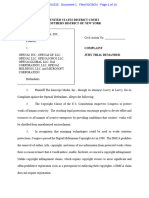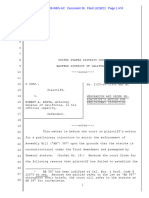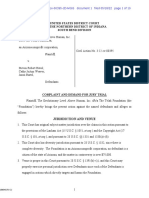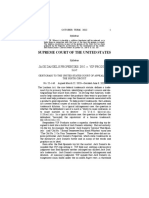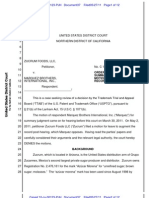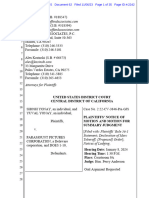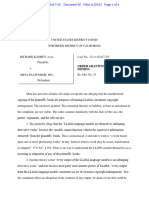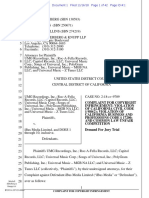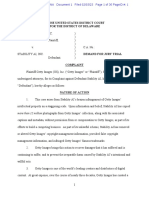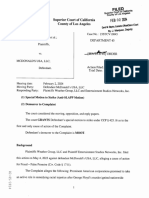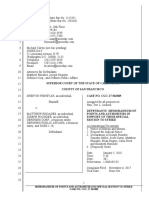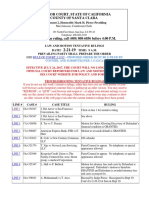0% found this document useful (0 votes)
19K views6 pagesAndersen v. Stability AI
DeviantArt renewed its special motion to strike under California's anti-SLAPP statute directed at Plaintiffs' right of publicity claims from the original complaint. The court denied the motion because the claims fell under the public interest exception to anti-SLAPP. Plaintiffs then filed an amended complaint that omitted the right of publicity claims, but DeviantArt renewed its motion, arguing it should still be granted and it deserves attorney fees. The court discusses the applicable legal standard for anti-SLAPP motions and exceptions.
Uploaded by
THRCopyright
© © All Rights Reserved
We take content rights seriously. If you suspect this is your content, claim it here.
Available Formats
Download as PDF, TXT or read online on Scribd
0% found this document useful (0 votes)
19K views6 pagesAndersen v. Stability AI
DeviantArt renewed its special motion to strike under California's anti-SLAPP statute directed at Plaintiffs' right of publicity claims from the original complaint. The court denied the motion because the claims fell under the public interest exception to anti-SLAPP. Plaintiffs then filed an amended complaint that omitted the right of publicity claims, but DeviantArt renewed its motion, arguing it should still be granted and it deserves attorney fees. The court discusses the applicable legal standard for anti-SLAPP motions and exceptions.
Uploaded by
THRCopyright
© © All Rights Reserved
We take content rights seriously. If you suspect this is your content, claim it here.
Available Formats
Download as PDF, TXT or read online on Scribd
/ 6
